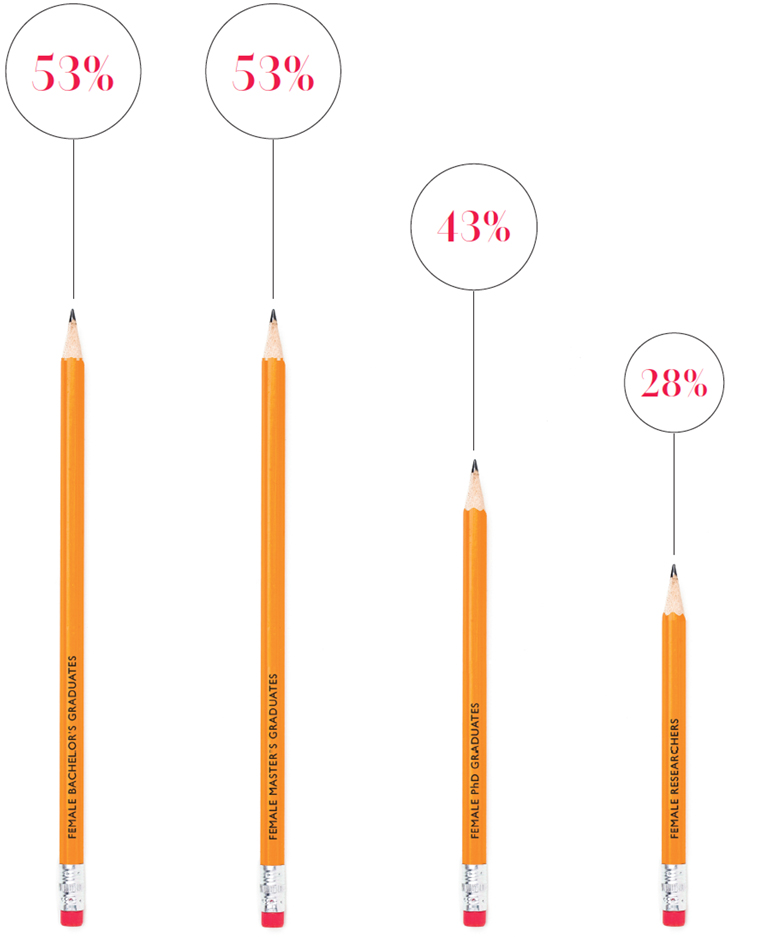


It is sending your message ...
 Women and STEM around the world
Women and STEM around the worldAs part of the global equity and inclusion imperative, the Incheon Declaration adopted by the 2015 World Education Forum called for an urgent elimination of gender disparities, by ensuring equal access for all women and men to affordable quality technical, vocational and tertiary education, including university (Target 4.5, SDG4). Many governments have been committed to promoting gender equality in education; at least in terms of access, many countries are moving toward gender parity in secondary education.
However, anyone who digs below the basic statistics on access will find that significant disparities remain in specific areas and at specific levels of education systems. To date, far fewer women than men are pursuing university degrees and careers in STEM fields. Why? Because many general education systems fail to enable girls to earn passes in learning areas that enable them to specialize in STEM at the tertiary level. Even as women have become a larger share of the college-educated workforce over the past decade, they remain underrepresented in STEM. Likewise, despite the high proportion of women in higher education, gender parity remains elusive in research. Many factors explain this situation. In schools, girls encounter uninformed teaching practices, misrepresentations in textbooks and low societal expectations. They tend to have low self-confidence. In the STEM fields, women encounter gender stereotyping, lack of role models, isolation by their peers if they pursue scientific studies, and less family-friendly flexibility. All these factors continue to discourage girls and women from pursuing STEM education and STEM jobs.
What should be done to increase women’s presence in STEM fields? One important strategy is developing inclusive STEM curricula, which can enrich the learning experiences of all learners and change mindsets and practices across societies. The IBE is deeply committed to supporting countries as they implement gender-responsive STEM policies through their curricula. But the IBE cannot do this alone. It is crucial to develop robust partnerships that can deliver on multiple imperatives and bring in valuable experience on ways to enhance girls’ participation and performance in STEM subjects.
Malaysia brings considerable intellectual firepower and know-how to bear on the issue. To meet its goal of becoming a developed nation by 2015, the government sharpened its focus on STEM fields, especially in education. For instance, over the next five years, 60% of high school graduates will be concentrating in science, technology, engineering and math. The country already has a sufficient threshold of women in STEM. In fact, Malaysia’s science programs are the most gender-integrated in the world: Women earn 57% of science degrees and about half of computer science degrees.

Source: UNESCO Science Report 2015, based on UNESCO Institute for Statistics estimates.
This background provided the catalyst for the IBE and the Malaysia government to join efforts in supporting other countries, especially those in the geographic South, in bringing more girls into STEM education.
In April 2015, in Geneva, Malaysia’s deputy prime minister and minister of education, the Honourable Tan Sri Muhyidin Mohd Yasin, along with Director Mmantsetsa Marope, launched a joint initiative titled Strengthening STEM Curricula for Girls in Africa, and Asia and the Pacific. The initiative aims to strengthen STEM policies, curricula, pedagogy, and teacher education and professional development in four countries: Cambodia, Indonesia, Kenya, and Nigeria.